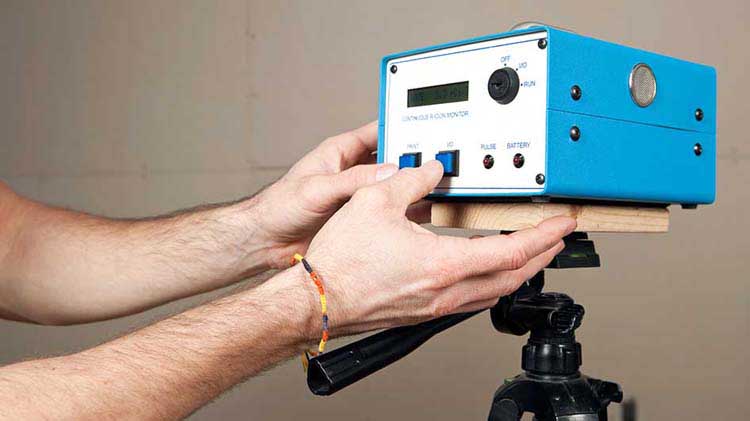Tips for dealing with lead paint
If your home was built before 1978, and occasionally after that, lead may be present in lead-based paint, so read these safety tips.
If your home was built before 1978, it likely contains lead-based paint. Even if it was built years after 1978, it could still have lead paint if the painter was using an older can of paint. In rare cases, inspectors have found lead paint in housing built even in the 1990’s because the painter had stocked up on paint and used the old cans. According to the CDC, roughly 29 million housing units contain lead-based paint hazards. Lead exposure isn't something to take lightly, particularly if you have young children.
Lead poisoning symptoms
Lead is dangerous to people of all ages, but children younger than 6 years old are particularly susceptible. Some of the effects of lead exposure — even low levels — in children and adults can include:
- Damage to the kidneys and nervous system.
- Learning disabilities.
- Issues with speech, language and behavior.
- Slowed physical growth.
- High-risk pregnancies and fertility issues.
- High blood pressure.
- Problems with digestion.
A simple blood test at the doctor's office can detect lead poisoning. The best way to treat lead poisoning is to remove or minimize exposure to lead.
Ways to identify lead paint
A good starting point for identifying lead paint is to know the age of your home. The older the home, the more likely it is to have lead paint. If it was built before 1978, to be on the safe side, assume that you have lead paint. For homes built before 1978:
- If the paint is flaking off, that's a sign that it's older paint and more likely to have lead. Flaking paint also means it's exponentially dangerous to small children who might ingest it, so this condition should be remediated.
- If you see indications of multiple layers of paint applied on top of each other, that increases the likelihood that lead paint is at the original layer(s).
- If you have painted wood or metal from when the home was built, those surfaces are likely candidates for lead.
- You could contact previous owners who lived in the home and ask if they may know for sure if there is lead paint. They might know about it if they lived in the home prior to 1978 or have previously tested it for lead.
- There are various test kits available that can be used.
- X-ray fluorescence (XRF) can be used for analysis as well. XRF devices are cost prohibitive for most non-professional lead inspections, but they are used by some professionals.
- If you suspect lead in your home, you can hire a certified inspector or risk assessor to test your home.
Tips for handling lead paint
If your home has lead-based paint, take these steps to help keep your family safe.
- Check surfaces. Lead-based paint in good shape is not a threat. But wear and tear is likely, particularly with painted window frames, doors, doorframes and stairs. Regularly inspect surfaces for peeling, chipping or damage.
- Keep it clean. Even a few particles of lead-based paint can be hazardous. Regularly wipe down floors, windowsills and other paint-covered surfaces to keep them free from lead dust.
- Performing any work that could agitate the lead paint is not recommended for the average do it yourself remodeler. Specialized tools, training and materials should be used for most of these projects. For instance, Environmental Protection Agency (EPA) certified contractors use hazmat suits, NIOSH-certified respirators and HEPA vacuums among other tools. The EPA's Renovation, Repair and Painting Rule (RRP) requires that only EPA certified companies work on renovations or repairs that may cause any lead paint disturbance. Even if you're a landlord working on your own rental property, this rule applies to you. Remodel with care. Home improvements that involve scraping or disturbing paint may release toxic lead dust. The RRP rule doesn't apply to individuals working on their own residence, so if you're determined to do this yourself, learn as much as you can about lead-safe renovation practices and follow the EPA guidelines. Or, better yet ...
- Hire a pro. Enlist a Lead-Safe Certified renovation firm to help with your next project, or hire a certified lead abatement contractor to ditch lead for good. Find certified inspection, risk assessment, abatement and renovation firms on the EPA's website. If you hire a professional, it's worthwhile to read this article so you can be aware of your options and better communicate with professionals regarding lead paint mitigation.
Ways to encapsulate lead paint
Painting over lead is generally the easiest way to provide some protection against lead paint, but it’s also the least effective. Painting over lead paint is very susceptible to wear and other damage and requires that the surface is clean, smooth and doesn’t have prohibitive damage. A step up from this is to encapsulate lead paint.
Encapsulating lead paint can still have drawbacks
- Encapsulation can wear off. For this reason, you should avoid encapsulating in high traffic areas such as floors, doors, drawers and windows.
- Encapsulation is particularly a danger for wooden areas such as windowsills and trim where the sweet taste present in lead paint or the feel of biting on the wood might encourage a child or pet to bite through the encapsulation. Most types of encapsulation will better deter this compared to doing nothing or simply painting over it, but the danger of exposure from damage is still there.
- Encapsulants themselves can have chemicals that are hazardous.
- Encapsulation can reduce details in surfaces such as trim or crown molding.
A few things to consider when encapsulating
- Make sure the surface is smooth, clean, not glossy and not damaged. If it’s damaged, fix the area and also the source of the damage. If it’s glossy, the area may need to be roughed up in order for the encapsulation to adhere properly, which can release lead dust. If there are cracks, paint flaking or other issues with the surface, those issues should be remedied. As these issues are mitigated, be careful to prevent exposure to the lead paint.
- There are several types of encapsulants to choose from. Apply the encapsulation according to the instructions. Different surfaces can require different encapsulation products. The types of encapsulation products include:
- Flexible membrane coatings. These are polymers applied with a roller, brush or airless spray gun.
- Hard but flexible membranes. These are epoxy or polyurethane polymers applied with a roller, brush or airless spray gun.
- Hard, thick, inflexible coatings. These are cement like materials containing polymers usually applied with a trowel.
Using building materials to cover lead paint
In some cases, covering lead paint with building materials is another option. Make sure none of the old lead paint is still exposed, such as in corners. The lead paint can still be disturbed during the process, so safety precautions are necessary to avoid exposure and you may need to hire a professional. Ensure that down the road there won’t be issues with the covering surfaces that require removal (cracks or bulges forming, wanting to change the style of the room, etc.) as that could be an even more expensive problem. You’ll need to prepare the surface appropriately for the method you choose. There are quite a few options, including:
- Covering with a sheet of drywall.
- Covering with wallpaper.
- Covering with shiplap. Many types of shiplap leave a gap between each board. If this is the case, make sure the gaps are encapsulated or mitigated properly. Be aware that if the gaps are big enough, children could still get through with their fingers, pencils, crayons or other tools they might come up with and some pets could still get to the paint. Chipping or paint dust could also fall through the cracks.
- Covering with wall paneling.
Tips for how to remove lead paint
A proper removal is the surest remediation, but removal can also be the most dangerous and costly. This is because removal can create more exposure to lead from lead dust than other methods and the cosmetics of the mitigated surface still generally need to be dealt with. As indicated earlier, lead paint removal should be done by a qualified professional. If you’d like more details on how a qualified professional will go about this task — or you want to mitigate the residence you live in and have the talent, time and willingness to go through great effort to ensure the safety of yourself and those you live with — you can read Steps to LEAD SAFE Renovation, Repair and Painting published by the EPA.
Look past the paint. Lead also may be present in soil tracked into the house, on some children's toys and even in older pipes and plumbing.




